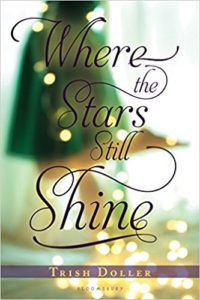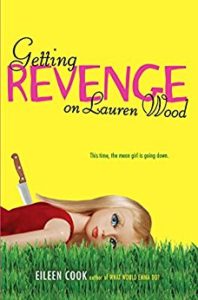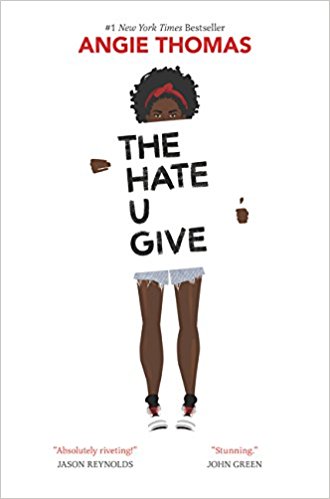 This is a remarkable book that lives up to the hype surrounding it. Most of you will probably already know of this book, so you’ll know it’s about a black girl whose unarmed, black male friend gets shot by a white cop in front of her. Obviously a topical subject, but the book really delivers a great fiction experience all while introducing readers to a world they probably don’t know at all, as well as an inside perspective on what black people regularly face. I love reading books set in places or cultures I have little to no exposure to, even though it’s uncomfortable at times, and that was all true for this book.
This is a remarkable book that lives up to the hype surrounding it. Most of you will probably already know of this book, so you’ll know it’s about a black girl whose unarmed, black male friend gets shot by a white cop in front of her. Obviously a topical subject, but the book really delivers a great fiction experience all while introducing readers to a world they probably don’t know at all, as well as an inside perspective on what black people regularly face. I love reading books set in places or cultures I have little to no exposure to, even though it’s uncomfortable at times, and that was all true for this book.
Starr Carter’s a great character, complex and just flawed enough to be deeply interesting. She’s a pretty normal sixteen-year-old girl, except that she attends a private school named Williamson while living in a neighborhood plagued with violence and drugs. Gang life is all around her, except when she’s at school or tucked safely in her home. Her mom is a nurse and her dad runs the local grocery store, making them a little different from many of their neighbors, even though her dad does have a history with the local gang. Not surprisingly, Starr thinks of the school Starr as distinct from the home Starr. Navigating those two identities is complicated. As she says:
Williamson Starr doesn’t use slang—if a rapper would say it, she doesn’t say it, even if her white friends do.
And when her boyfriend is visiting her family so her worlds are colliding:
I can use some slang, but not too much slang, some attitude, but not too much attitude, so I’m not a “sassy black girl.” I have to watch what I say and how I say it, but I can’t sound “white.”
This is typical of that frustrating pattern where people of a power-compromised group are held to a different standard (and it’s not just minorities—women face that in the corporate world, too).
At school, her best friends are a white girl named Hailey and an (east) Asian girl named Maya. And her boyfriend is white, too. They bond over basketball, which they all play (with skill).
Starr manages her two lives pretty well, even though there are cracks in her relationships already showing at the beginning. Hailey unfollowed her on Instagram, which Starr knows is because of posts she’s put up related to mistreatment of blacks over the decades. And although we don’t know what it is for a little while, something happened with her boyfriend that pissed her off (before the book starts).
Starr’s family is also complicated, but her relationships with both her parents are solid. It’s also a source of some of the humor in the book. An exchange between Starr and her mom:
[Her mom:] “What is Tumblr anyway? Is it like Facebook?”
“No, and you’re forbidden to get one. No parents allowed. You guys already took over Facebook.”
“You haven’t responded to my friend request yet.”
“I know.”
“I need Candy Crush lives.”
“That’s why I’ll never respond.”
It’s not the only funny thing in the book by far.
Hailey is an interesting, if unlikeable, character. Starr’s been friends with her for many years. The two bonded when Starr first started at the private school because they both had just been through the trauma of losing someone (Hailey’s mom had died and Starr had just witnessed one of her good friends murdered in a drive-by shooting while they were playing outside). Still, Hailey’s very much a White Girl. I first heard that as a capital-letter-term in reference to someone I know, and I knew what it meant—she’s very entitled and all her problems are very much first-world problems. Hailey, like so many white kids now, thinks of herself as enlightened and probably post-racial. But the problem is, she is still looking at things through her very privileged eyes. Eventually that causes some big problems with Starr.
As I mentioned, this book will introduce many readers to a setting they probably have little experience with. The neighborhood is very real. And we see it through Starr’s eyes—both through school Starr’s perspective and home Starr’s perspective. School Starr finds it embarrassing, but home Starr gets it. She doesn’t like everything about it, but she understands how it works, how to navigate that world, and how she has to deal with the important players. The dialogue in the book is natural and flowing, as well as very up-to-date and realistic (I’m assuming—there were quite a few slang words whose meaning I didn’t know, and which I would certainly never use even if I “learned” the meaning).
One of my favorite lines in the book, probably because it perfectly sums everything up, comes just after Starr has been through the initial interview with the detectives investigating the shooting she witnessed. It’s clear the detectives have an agenda and it isn’t the right one. She says:
This is gonna be some bullshit.
Anyway, I’m glad they’re making a movie out of it and I look forward to more books from Thomas.
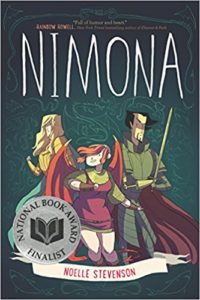 I don’t remember how I found out about this graphic novel, but I’m glad I did, because it was highly entertaining. Although art is generally a matter of personal preference, I liked it. The book features Nimona, a shapeshifter whose base form is that of a teenage girl, and Ballister Blackheart, the kingdom’s purported notorious villain. Blackheart has a vendetta against Ambrosius Goldenloin, who destroyed Blackheart’s right arm. These are the folks you see on the cover. The comic is set in a vaguely medieval world with advanced science. It’s clever and even subversive at times, all while managing to be hilarious.
I don’t remember how I found out about this graphic novel, but I’m glad I did, because it was highly entertaining. Although art is generally a matter of personal preference, I liked it. The book features Nimona, a shapeshifter whose base form is that of a teenage girl, and Ballister Blackheart, the kingdom’s purported notorious villain. Blackheart has a vendetta against Ambrosius Goldenloin, who destroyed Blackheart’s right arm. These are the folks you see on the cover. The comic is set in a vaguely medieval world with advanced science. It’s clever and even subversive at times, all while managing to be hilarious.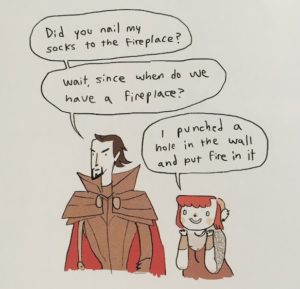
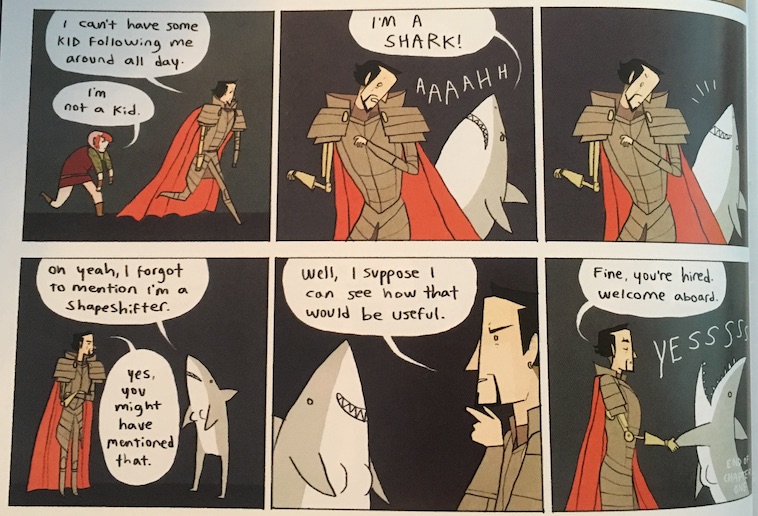

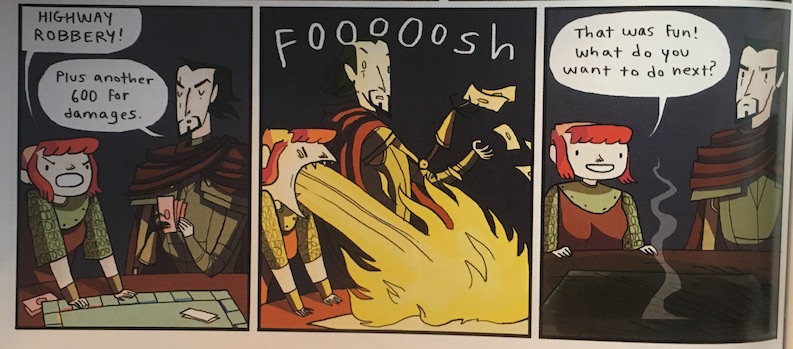
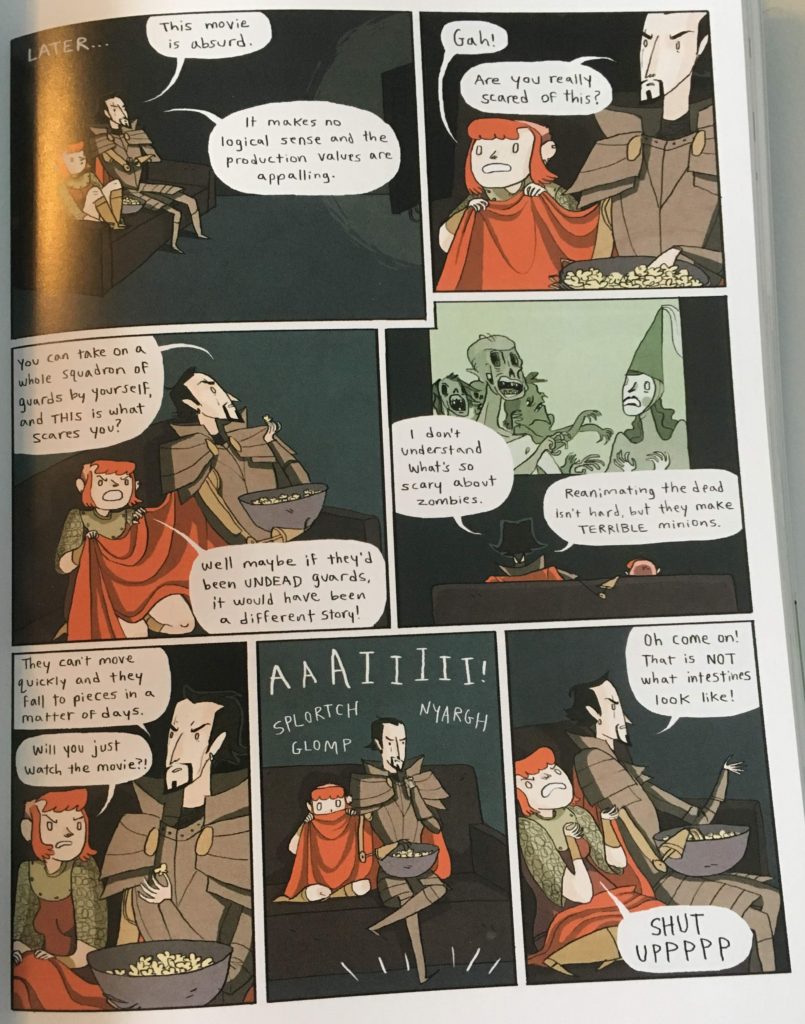
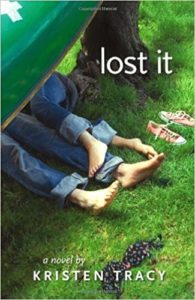 The back blurb sets this book up as very comical. Although the book does have funny moments, that’s a little misleading, as it’s not nonstop laughs. It’s clear from the setup at the very beginning that it’s really about a girl losing her virginity and everything leading up to (and following) that, and it’s serious to her. The title therefore sums it up pretty well, although the title does tie into some other losses in the book, as well. There were a couple other storylines, but the romance between Tess and Ben predominates.
The back blurb sets this book up as very comical. Although the book does have funny moments, that’s a little misleading, as it’s not nonstop laughs. It’s clear from the setup at the very beginning that it’s really about a girl losing her virginity and everything leading up to (and following) that, and it’s serious to her. The title therefore sums it up pretty well, although the title does tie into some other losses in the book, as well. There were a couple other storylines, but the romance between Tess and Ben predominates. This is quite a book, very addictive. It’s a debut, too, which makes it extra surprising, because it feels a little masterful. It’s a tricky psychological thriller with four unreliable narrators. Actually, I’m not sure if the label “psychological thriller” quite fits because it’s not particularly intense like you’d expect with a thriller. Although the book messes with your head, it’s a little mellow compared to Gillian Flynn’s books and The Girl on the Train, I think because there’s more of a sense of danger in those than in One of Us Is Lying. In this book, the mystery is at the forefront. Who killed Simon and how are they hiding that from us despite the fact that we’re in their heads?
This is quite a book, very addictive. It’s a debut, too, which makes it extra surprising, because it feels a little masterful. It’s a tricky psychological thriller with four unreliable narrators. Actually, I’m not sure if the label “psychological thriller” quite fits because it’s not particularly intense like you’d expect with a thriller. Although the book messes with your head, it’s a little mellow compared to Gillian Flynn’s books and The Girl on the Train, I think because there’s more of a sense of danger in those than in One of Us Is Lying. In this book, the mystery is at the forefront. Who killed Simon and how are they hiding that from us despite the fact that we’re in their heads?
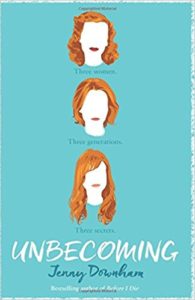 This story is really about the generational after effects of the restrictions and expectations placed on women in the mid-20
This story is really about the generational after effects of the restrictions and expectations placed on women in the mid-20 A lot of people have someone in their life who has had cancer. This book explores the impact a cancer diagnosis has on an entire family. It focuses on Tess, who’s a studious, artistic, shy, and slightly fashion-averse freshman. She’s constantly in the shadow of her older sister, Kristina, a social butterfly who’s also a star volleyball player. At school, no one knows who Tess is, except for her one friend. Even her mom seems to prefer Kristina.
A lot of people have someone in their life who has had cancer. This book explores the impact a cancer diagnosis has on an entire family. It focuses on Tess, who’s a studious, artistic, shy, and slightly fashion-averse freshman. She’s constantly in the shadow of her older sister, Kristina, a social butterfly who’s also a star volleyball player. At school, no one knows who Tess is, except for her one friend. Even her mom seems to prefer Kristina.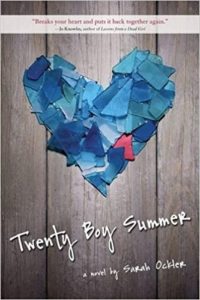 This book has been out a few years but I only just now discovered (thanks, Amazon recommendations). I’m glad I found it because it’s really good. Ockler writes beautifully, with description that really sets the scene and really gives you a sense of the emotions at play here. Most of the book takes place at the beach and the atmosphere is really powerful. When the characters discuss the majesty of the sea, I could really see and feel it, for instance.
This book has been out a few years but I only just now discovered (thanks, Amazon recommendations). I’m glad I found it because it’s really good. Ockler writes beautifully, with description that really sets the scene and really gives you a sense of the emotions at play here. Most of the book takes place at the beach and the atmosphere is really powerful. When the characters discuss the majesty of the sea, I could really see and feel it, for instance.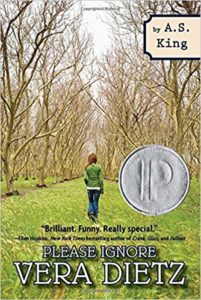 I listened to the audiobook version of A.S. King’s Ask the Passengers and a friend recommended another of her books, so when I was at Powell’s* when I was in Portland (Oregon) last weekend and spotted this book, I picked it up.
I listened to the audiobook version of A.S. King’s Ask the Passengers and a friend recommended another of her books, so when I was at Powell’s* when I was in Portland (Oregon) last weekend and spotted this book, I picked it up. Frankie’s such a great character. She’s so 15—new to many things and trying to navigate a world with changing expectations. And she’s smart and notices things (regarding a party she was excited to be invited to, and frustrated to be ignored at: “The party was boring. It was people standing around in the cold.”), even though she doesn’t generally over-analyze. She is going into her sophomore year at an elite boarding school with a new, woman-ified body after spending her freshman year as an awkward girl (over the summer, she “gained four inches and twenty pounds, all in the right places”). And a feminism-inspired sense of right and wrong is blossoming within her, as well, partially because of her Berkeley-bound feminist sister and partially because it’s just who she really is. The last point is the best part to me. She’s not willing to accept the status quo when it’s not fair.
Frankie’s such a great character. She’s so 15—new to many things and trying to navigate a world with changing expectations. And she’s smart and notices things (regarding a party she was excited to be invited to, and frustrated to be ignored at: “The party was boring. It was people standing around in the cold.”), even though she doesn’t generally over-analyze. She is going into her sophomore year at an elite boarding school with a new, woman-ified body after spending her freshman year as an awkward girl (over the summer, she “gained four inches and twenty pounds, all in the right places”). And a feminism-inspired sense of right and wrong is blossoming within her, as well, partially because of her Berkeley-bound feminist sister and partially because it’s just who she really is. The last point is the best part to me. She’s not willing to accept the status quo when it’s not fair.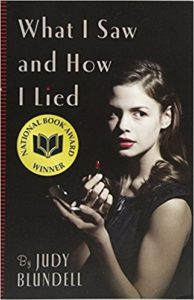 What I Saw and How I Lied is an interesting historical, set just after WW II. It features quietly bold 15-year-old Evie, whose mother is a bombshell while Evie herself is a bit plain. And she’s not happy about it. Her stepfather is a charming sort but when he gets frustrated by something, they take off in the car and head from Brooklyn to Palm Beach, Florida. There, Evie learns a lot of surprising and not-so-nice things about the world and her parents. She also meets a man who she falls for, despite the fact that he’s 8 years older. It eventually seems to her that pretty much everything she believed about her parents and their life together was a lie. Then she’s put in a position no one wants to be: she has to betray someone—but will it be her parents or the man she’s fallen in love with? And what about the truth—how important is that compared to family loyalty?
What I Saw and How I Lied is an interesting historical, set just after WW II. It features quietly bold 15-year-old Evie, whose mother is a bombshell while Evie herself is a bit plain. And she’s not happy about it. Her stepfather is a charming sort but when he gets frustrated by something, they take off in the car and head from Brooklyn to Palm Beach, Florida. There, Evie learns a lot of surprising and not-so-nice things about the world and her parents. She also meets a man who she falls for, despite the fact that he’s 8 years older. It eventually seems to her that pretty much everything she believed about her parents and their life together was a lie. Then she’s put in a position no one wants to be: she has to betray someone—but will it be her parents or the man she’s fallen in love with? And what about the truth—how important is that compared to family loyalty?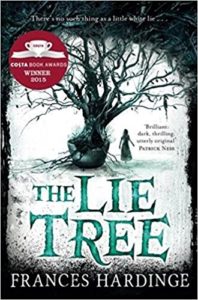 The Lie Tree is a fascinating and unusual book. The idea of the lie tree itself is interesting and creative. The novel touches on feminism, the nature of lies and truth, growing up, knowing yourself, familial love, and fairness. There’s a sense of foreboding throughout that escalates and escalates until the climax. It took me a while to read, but I think that’s because it made me so nervous for the main character, Faith Sunderly, that I would have to set it down. As I neared the end of the book, it was hard to see what would happen next. It’s usually categorized as dark fantasy, but I’d say it’s at least pseudo-horror for the effect it had on me.
The Lie Tree is a fascinating and unusual book. The idea of the lie tree itself is interesting and creative. The novel touches on feminism, the nature of lies and truth, growing up, knowing yourself, familial love, and fairness. There’s a sense of foreboding throughout that escalates and escalates until the climax. It took me a while to read, but I think that’s because it made me so nervous for the main character, Faith Sunderly, that I would have to set it down. As I neared the end of the book, it was hard to see what would happen next. It’s usually categorized as dark fantasy, but I’d say it’s at least pseudo-horror for the effect it had on me.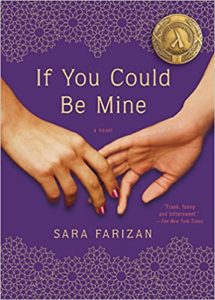 If You Could Be Mine is set in modern-day Iran, which is definitely a setting I’m not very familiar with, so I was excited to read it. It’s narrated by Sahar, a seventeen-year-old lesbian, which is not okay in Iran. In fact, it’s illegal and the penalty can be as dramatic as death. The immediate problem for Sahar is that she has been in love with her friend Nasrin for as long as she can remember, and Nasrin loves her back. Of course, they spend a lot of time alone and this allows them to make out uninterrupted, so everything is fine.
If You Could Be Mine is set in modern-day Iran, which is definitely a setting I’m not very familiar with, so I was excited to read it. It’s narrated by Sahar, a seventeen-year-old lesbian, which is not okay in Iran. In fact, it’s illegal and the penalty can be as dramatic as death. The immediate problem for Sahar is that she has been in love with her friend Nasrin for as long as she can remember, and Nasrin loves her back. Of course, they spend a lot of time alone and this allows them to make out uninterrupted, so everything is fine.